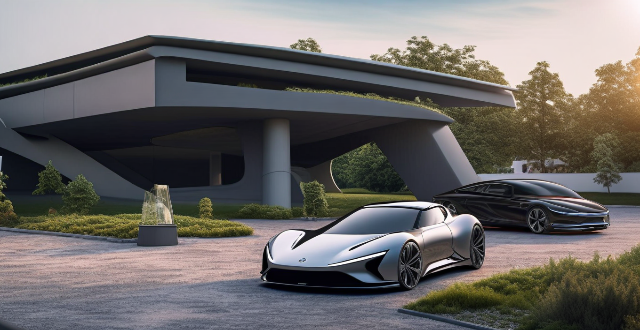The future of automobile environmental standards is likely to be shaped by a number of factors, including technological advancements, government regulations, and consumer demand for more sustainable transportation options. Key trends include the increasing popularity of electric vehicles, stricter fuel efficiency standards, growing interest in alternative fuels such as hydrogen fuel cells and biofuels, the development of connected and autonomous vehicles, aggressive government policies aimed at reducing transportation-related emissions, and rising consumer demand for eco-friendly modes of transportation. Overall, the trend towards cleaner, more efficient vehicles is expected to continue in the years ahead.

The Future of Automobile Environmental Standards
The future of automobile environmental standards is likely to be shaped by a number of factors, including technological advancements, government regulations, and consumer demand for more sustainable transportation options. Here are some key trends that are expected to shape the future of automobile environmental standards:
1. Electric Vehicles (EVs)
Electric vehicles are becoming increasingly popular as they offer a cleaner and more sustainable alternative to traditional gasoline-powered cars. As battery technology continues to improve and costs decrease, we can expect to see even more EVs on the road in the coming years. This will lead to stricter emissions standards for new vehicles, as well as incentives for consumers to switch to electric cars.
2. Fuel Efficiency Standards
Governments around the world are implementing stricter fuel efficiency standards to reduce greenhouse gas emissions from transportation. These standards require automakers to produce vehicles that achieve higher fuel economy ratings, which can be achieved through improvements in engine technology, aerodynamics, and weight reduction. As these standards become more stringent, we can expect to see further advancements in fuel-efficient vehicle technology.
3. Alternative Fuels
In addition to electric vehicles, there is growing interest in alternative fuels such as hydrogen fuel cells and biofuels. These technologies offer the potential for zero-emission transportation while still using existing infrastructure. However, their adoption will depend on factors such as cost, availability, and consumer acceptance.
4. Connected and Autonomous Vehicles
Connected and autonomous vehicles have the potential to revolutionize transportation by reducing congestion, improving safety, and increasing fuel efficiency. As these technologies continue to develop, we can expect to see new environmental standards that take into account the unique characteristics of connected and autonomous vehicles.
5. Government Regulations and Incentives
Governments play a critical role in setting environmental standards for automobiles through regulations and incentives. For example, many countries offer tax credits or rebates for purchasing electric vehicles, while others impose penalties on automakers who fail to meet emissions standards. As concerns about climate change continue to grow, we can expect to see even more aggressive policies aimed at reducing transportation-related emissions.
6. Consumer Demand for Sustainability
Finally, consumer demand for more sustainable transportation options is driving changes in automobile environmental standards. As awareness of climate change and its impacts grows, more people are looking for ways to reduce their carbon footprint, including choosing eco-friendly modes of transportation. This trend is likely to continue, with consumers demanding ever-stricter environmental standards from automakers and policymakers alike.
In conclusion, the future of automobile environmental standards is likely to be shaped by a combination of technological advancements, government regulations, and consumer demand for more sustainable transportation options. While it's impossible to predict exactly what the future holds, it's clear that the trend towards cleaner, more efficient vehicles will continue to gain momentum in the years ahead.